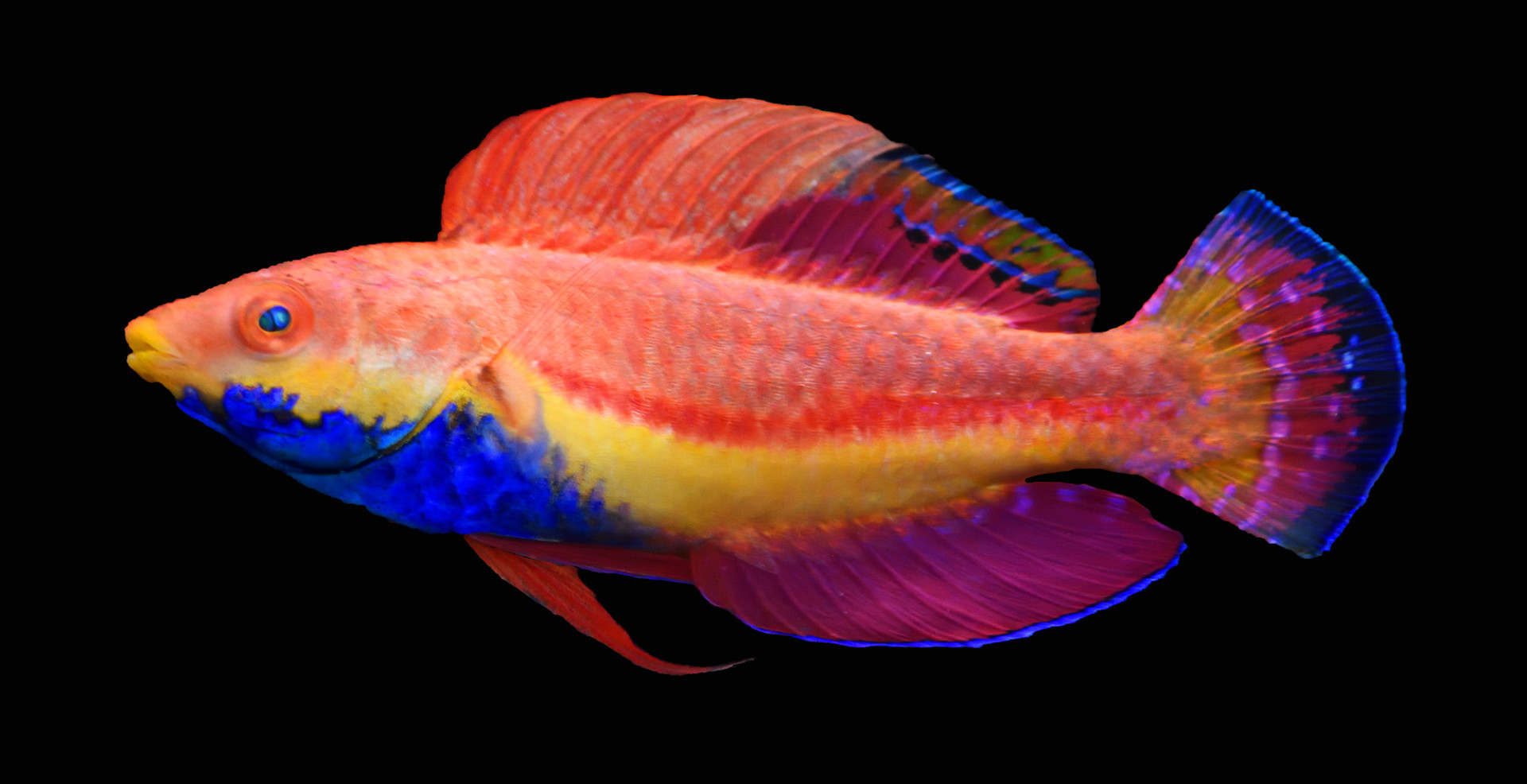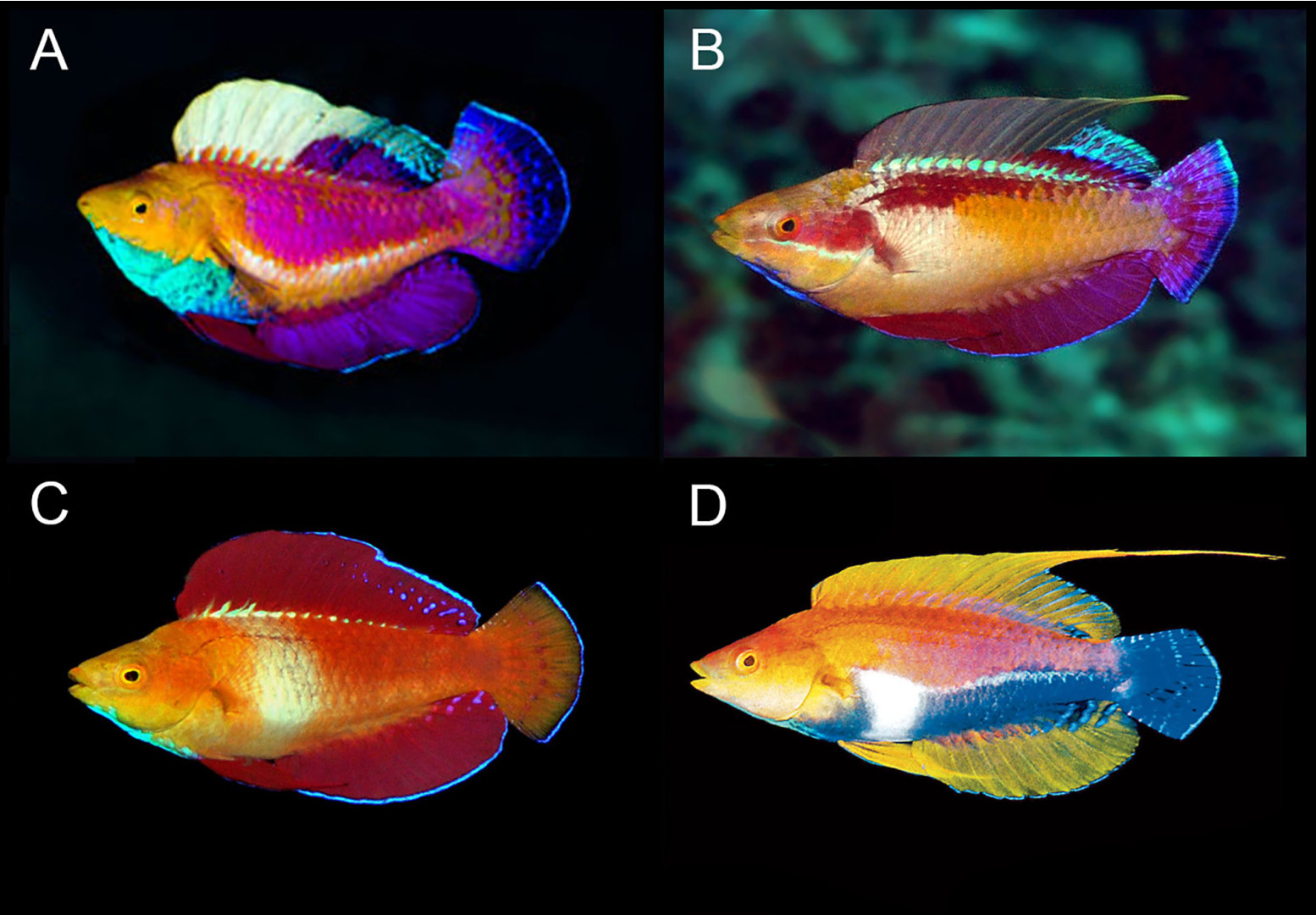
Sailfin Fairy Wrasse, AKA Blue Throat Fairy Wrasse (Cirrhlabrus cyanogularis) Credit: Y.K. Tea / Tea et al. 2018
It’s been far too long since we last welcomed a new fairy wrasse into the taxonomic world. Until today, the most recent addition happened way back in December, when Cirrhilabrus greeni was unexpectedly described from the Timor Sea. Specimens of that fish had never before been seen (i.e. an unknown unknown, as they say), but the same cannot be said for the newly minted Cirrhilabrus cyanogularis.
For more than a decade, specimens of this fish have been trickling into the aquarium trade, first from Sulawesi and, in recent years, from the Sulu Archipelago. Divers also documented it from Borneo, and a single photo taken at Bali (presumably of this species) fleshes out the extent of its known distribution. But this is a very peculiar endemism. The range is seemingly limited to the Celebes Sea and south through the Makassar Strait, but does any other reef fish have a comparable distribution in the wild? (No.)
It’s closest relatives are the Redfin Fairy Wrasse (C. rubripinnis) of the Philippines, Tono’s Fairy Wrasse (C. tonozukai) from the eastern portions of Indonesia, and the Filamented Fairy Wrasse (C. filamentosus) from the Lesser Sunda Islands. Males of these taxa are all easily told apart by the colors and shape of the dorsal fin. You can read a bit more about those details in my discussion of this fish from a couple years back.

A) C. cyanogularis from Derawan, Indonesia (photo by H. Chan); B) C. tonozukai from East Timor (photo by G. Allen); C) C. rubripinnis from Anilao, Philippines (photo by G. Allen); D) C. filamentosus from Bali, Indonesia (photo R. Kuiter). From Tea et al. 2018
The name cyanogularis comes to us from the Greek for “blue throat”, in obvious reference to the brilliant caerulean breast seen in males, and this gives us this fish’s official common name, the Blue Throat Fairy Wrasse. Aquarists are equally likely to see it traded as the Sailfin Fairy Wrasse. It bears mention that the namesake blue throat is by no means unique to this species. It’s perhaps most prominent in C. cyanogularis, but all of its closest relatives show this same feature to some extent. This also holds true for its extended family in the Indian Ocean (rubeus, africanus, rubriventralis, etc.) as well as its Melanesian cousins (condei, walshi); however, the blue throat in these groups is generally limited to just a thin medial stripe.
This vast Indo-Pacific lineage could very well be the single most diverse example of allopatric speciation to be found in any group of reef fishes, and, for this reason, these wrasses are of special interest when it comes to elucidating the patterns of diversification and endemism in this region. A few traits help us to recognize the included members: 1) enlarged pelvic fins 2) predominantly red & white coloration 3) iridescent caudal fin 4) blue throat (at least medially) 5) enlarged or filamentous dorsal fin.
In addition, the authors highlight the single row of cheek scales common to these taxa, and suggest the possibility of resurrecting the name Cirrhilabrichthys for this morphologically discrete group. With Cirrhilabrus now approaching 60 species, the genus has quickly risen to become the largest in the wrasse family (the polyphyletic Halichoeres notwithstanding), and there is some potential usefulness to either splitting the group or adding some coherent subgenera. Unfortunately, we don’t yet fully know the evolutionary interrelationships of these fishes, particularly when it comes to the deeper splits. Just how do the major fairy wrasse groups relate to one another?
- Tea, Y.K., Frable, B.W. and Gill, A. 2018. Cirrhilabrus cyanogularis, a new species of fairy wrasse from the Philippines and Indonesia (Teleostei: Labridae). Zootaxa 4418 (6): 577–587 http://dx.doi.org/10.11646/zootaxa.4418.6.5









0 Comments